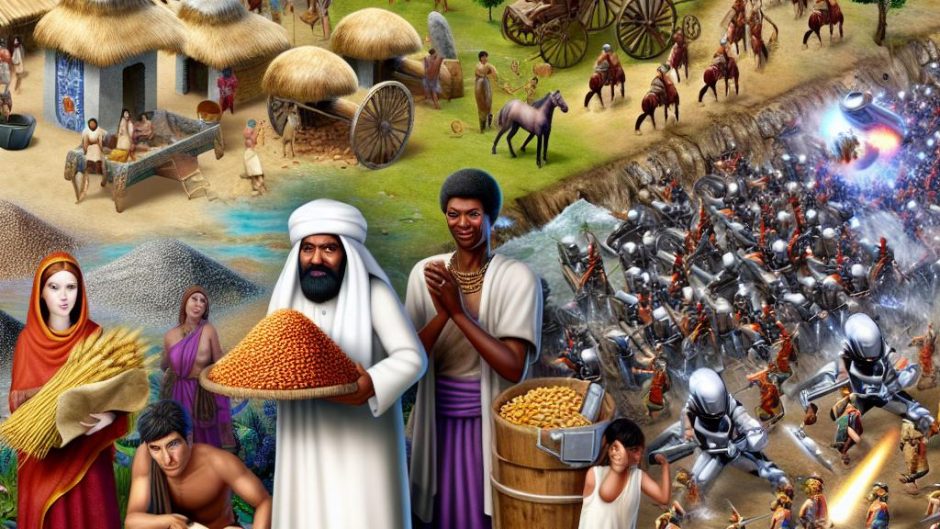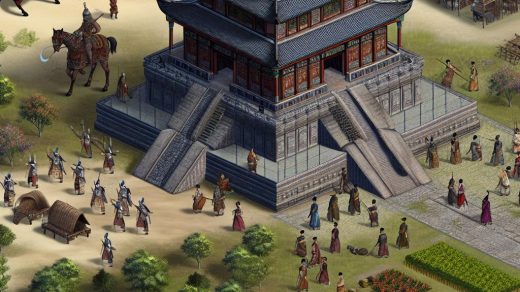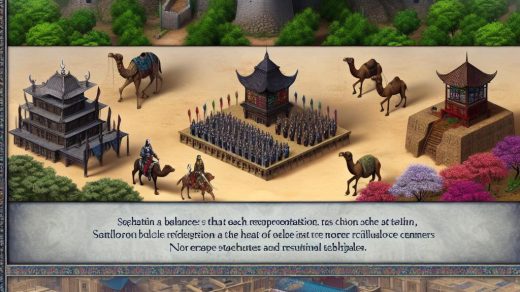Introduction to Empire Earth III
Empire Earth III is a real-time strategy (RTS) game developed by Maddox Games and released by Sierra Entertainment in November 2007. It serves as the third installment in the Empire Earth series, continuing the tradition of combining elements of historical and futuristic strategic gameplay.
Gameplay and Mechanics
The core of Empire Earth III is its expansive timeline, which spans a broad spectrum from the ancient era all the way to the distant future. Players are granted the unique opportunity to guide a civilization through different epochs, starting as a small settlement and eventually becoming a global powerhouse.
The game’s design distinguishes itself by offering a campaign that is divided into three distinct factions: the Western, Middle-Eastern, and Far Eastern realms. This trio provides diverse cultural and technological flavors to each gaming experience, thus enriching the strategic landscape. Simplifying the detailed epochs from previous iterations in the series, Empire Earth III achieves a more streamlined approach to strategy and decision-making.
Unique Features
One of the standout features introduced in this game is the ability to reshape the global terrain. This dynamic capability allows players to alter maps to better suit strategic needs, offering a fresh layer of tactics not commonly seen in other RTS games. Coupled with a simplified interface, the focus shifts from the micromanagement of units and resources to comprehensive, large-scale strategies.
Units and Structures
Units in Empire Earth III are classified into major categories: infantry, cavalry, air units, and naval vessels. As players progress through epochs, these units grow in sophistication, unlocking new abilities, tactics, and strategies. Similarly, structures within the game evolve, providing increased capabilities and resources to nourish the player’s growing empire.
Technology and Progression
At the heart of Empire Earth III is technological advancement, a crucial aspect that fuels the progression of your empire. Engaging in research opens up new opportunities, enabling the development of advanced units and cutting-edge structures. As players venture through different eras, they encounter new technologies and fresh challenges, emphasizing the necessity for adaptation and strategic depth in gameplay.
Graphics and User Experience
On the graphical front, Empire Earth III offers improvements over its predecessors, boasting more detailed animations and a refined interface for enhanced user experience. However, while these graphical enhancements were appreciated, the game received a mixed reception. This was largely due to its noticeable shift away from the complexity that initially characterized the series, leading to divided opinions among long-time fans.
Reception
Upon its release, Empire Earth III was met with a lukewarm response from both players and industry critics alike. Many critiques focused on the simplification of gameplay mechanics, which in previous versions, had offered more depth and complexity. Despite this, the game did receive praise for its efforts to innovate within the RTS genre, particularly with its dynamic terrain feature and its attempt to cover a broader global scope.
Conclusion
As an installment in the esteemed Empire Earth series, Empire Earth III emerges as both an ambitious and controversial entry. While designing the game, the developers aimed to innovate by streamlining certain gameplay aspects and introducing new features; however, these changes weren’t universally acclaimed. The game thus stands as a polarizing chapter in the franchise, reflecting the continual evolution and challenging dynamics of strategy gaming. Irrespective of its mixed legacy, it remains a poignant case study in the trajectory of RTS games.
For those who are interested in gaining more detailed insights into Empire Earth III or to delve further into its unique features, you may find it beneficial to explore detailed reviews available online.
This article was last updated on: April 26, 2025






Recent Comments